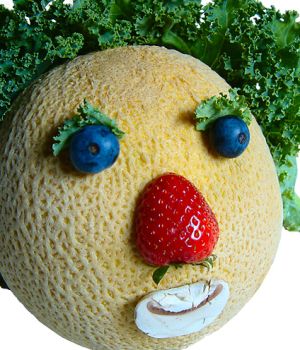On June 12, 1996, Ontario, Canada’s chief medical officer, Dr. Richard Schabas, issued a public health advisory on the presumed link between consumption of California strawberries and an outbreak of diarrheal illness among some 40 people in the Metro Toronto area. The announcement followed a similar statement from the Department of Health and Human Services in Houston, Texas, which was investigating a cluster of 18 cases of cyclospora illness among oil executives.
Turns out it was Guatemalan raspberries, and no one was happy.
Last month, the U.S. Food and Drug Administration and the Canadian Food Inspection Agency warned consumers to stay away from Honduran cantaloupes because of a salmonella outbreak that has sickened at least 50 Americans and nine Canadians.
 The president of Honduras is furious. So is the agriculture minister who is demanding millions in reparations, saying the U.S. has not scientifically proven the fruit was infected in Honduras.
The president of Honduras is furious. So is the agriculture minister who is demanding millions in reparations, saying the U.S. has not scientifically proven the fruit was infected in Honduras.
But proof is rare.
The initial, and subsequent, links between cyclospora and strawberries or raspberries in 1996 was based on epidemiology, a statistical association between consumption of a particular food and the onset of disease. The Toronto outbreak was first identified because some 35 guests attending a May 11, 1996 wedding reception developed the same severe, intestinal illness, seven to 10 days after the wedding, and subsequently tested positive for cyclospora. Based on interviews with those stricken, health authorities in Toronto and Texas concluded that California strawberries were the most likely source. However, attempts to remember exactly what one ate two weeks earlier is an extremely difficult task; and larger foods, like strawberries, are recalled more frequently than smaller foods, like raspberries.
By July 18, 1996, the CDC declared that raspberries from Guatemala — which had been sprayed with pesticides mixed with water that could have been contaminated with human sewage containing cyclospora — were the likely source of the cyclospora outbreak, which ultimately sickened about 1,000 people across North America. Guatemalan health authorities and producers vigorously refuted the charges. The California Strawberry Commission estimated it lost $15 million to $20 million in reduced strawberry sales.
Once epidemiology identifies a probable link between a food and some dangerous bug, health officials have to decide whether it makes sense to warn the public. In retrospect, the decision seems straightforward, but there are several possibilities that must be weighed at the time.
Back in 1996, when the Ontario Ministry of Health decided to warn people that eating imported strawberries might be connected to cyclospora infection, two outcomes were possible: if it turned out that strawberries were implicated, the ministry made a smart decision, warning people against something that could hurt them; if strawberries were not implicated, then the ministry made a bad decision with the result that strawberry growers and sellers lost money and people stopped eating something that was good for them.
If the ministry decided not to warn people, another two outcomes were possible: if strawberries were implicated, then the ministry made a bad decision and people could have acquired a parasitic infection they could have avoided had they been given the information (lawsuits usually follow); if strawberries were definitely not implicated then nothing happens, the industry does not suffer and the ministry does not get in trouble for not telling people.
These scenarios apply to cantaloupes and salmonella, raw milk and E. coli, and any other combination of food and pathogen.
.jpg) It’s often not fair. Any hosehead can come along and say, "Hey, I found a mouse in my beer bottle, give me a free case of beer." Or a syringe in some soda. Or I barfed from eating some food. The best producers or manufacturers can do is diligently manage and mitigate risks and be able to prove such diligence in the court of public opinion.
It’s often not fair. Any hosehead can come along and say, "Hey, I found a mouse in my beer bottle, give me a free case of beer." Or a syringe in some soda. Or I barfed from eating some food. The best producers or manufacturers can do is diligently manage and mitigate risks and be able to prove such diligence in the court of public opinion.
Douglas Powell is scientific director of the International Food Safety Network at Kansas State University. A video on preparing cantaloupe — and some nasty comments which highlight the trade and economic issues at stake — is available here .
